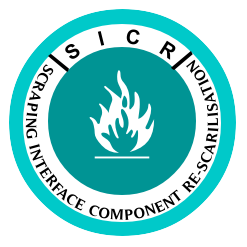Some of the most dangerous Trojan viruses provide remote access to your computer from other computers. This opens up the possibility of any number of things happening to you and your computer. These could be simply stealing personal information. It could be throwing popups onto your screen at seemingly random times. They could use your computer as a host in a Denial of service attack on a website. In short almost anything you could from your computer, someone accessing it remotely could also do.
A good virus checking program, running regular scans on your system and hard drive is a very good way keep your computer as safe as possible. But sometimes, you may just have a hunch or a suspicion something is going on, but your virus checker doesn't find anything. Maybe someone has told you they received an email from you that you don't remember sending. Perhaps your computer seems to be slow and the fan is running most of the time. Are applications taking longer to start than they used to? All of these could be signs that there is a process or program running in the background doing things you are not aware of.
To look for something like this you need to examine the processes that are running on your computer. You can open the Window Task Manager (Ctlr+Alt+Del) then select the Applications tab. See if you recognize all the items listed. You probably will. This is a list of the windows that are currently open on your computer. Trojans are usually sophisticated enough not to get listed here.
So next, select the Process tab. This lists all the processes running on your computer. You probably will recognize some of these but most likely will not recognize many others. See which ones are using the most CPU time. Do you know what these are?
If you don't recognize some of them, the next step is to do a little research. This is really pretty simple these days. Just type the name of the process from the list into a search engine. You should get back several links that will tell you about that process. If it's a dangerous process, follow the instructions you may find to get rid of it.
The following is a list of a few process and files that are known to be associated with Trojan Viruses that could provide others remote access to your computer.
Admdll.dll let others remotely control your computer. The Admdll.dll file is often associated with several Trojan viruses.
Ismon.exe is associated with the Trojan.W32.Zlob virus. This Trojan may open links to pornographic websites and also attempt to download and run files from a remote locations.
Main.exe is part of surveillance software. This auto-starting program is also a process relating to the Backdoor.Prorat Trojan virus. This Trojan allows attackers to access your computer from remote locations and also monitors your browsing habits and can prompt advertising popups.
Ntosa32.exeis a process which is registered as the TROJ_SUA.A Trojan virus. This Trojan allows attackers to access your computer from remote locations.
Ssgrate.exe is not a process, but a process entry into your computer's registry linking to system.exe - the Trojan.Mitglieder.C virus.
Suchost.exe is a part of Trojan.Treb virus. A trojan that gives remote access to your system using listening proxy servers.
Winshost.exe is a process which is registered as the TROJ_BAGLE.BE or Trojan.Tooso Trojan virus. This Trojan allows attackers to access your computer from remote locations.
The processes listed above are just a few of the many that can cause problems for a computer. Instead, of looking for all the viruses that could be a problem, it's much easier and quicker to examine the processes and files that are running on your own computer. If you suspect something may be going on, check it out. Viruses don't eliminate themselves.
 News article | World news
News article | World news





